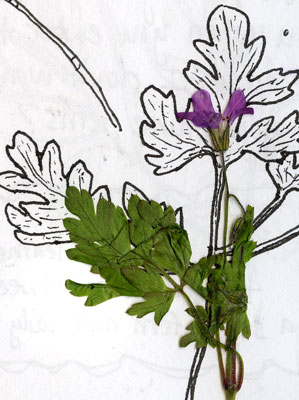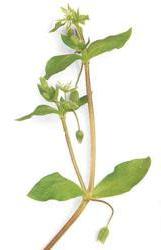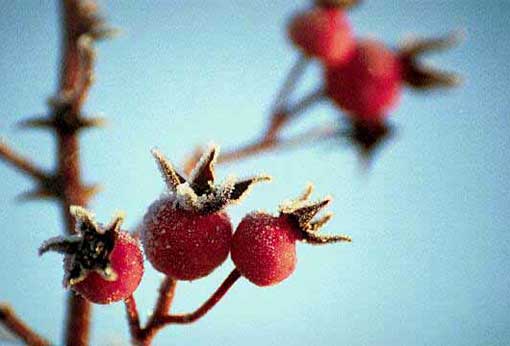User Login |
Project Log #1Date: 10/5/06 Activities Undertaken: Met with partner at Longhouse Garden site, and did plant identification research. Learning: I am becoming familiar with the plants at my site, learning about their characteristics, their likes and dislikes. I can now spot and identify the plants I am familiar with. Cumulative Hours: 1 hour 30 minutes
Date: 10/9/06 Activities Undertaken: Went to site and met Meg. Worked on site description, identified a handful of plants, talked about future plans and goals, weeded the path a little, discussed research that should be done to begin really working in our site. Learning: Many plants have very vague differences and can easily be identified wrong. Identification takes time and attention to detail. Smaller plants are much harder to identify than trees! I now know what common horsetail, nootka rose, trailing blackberry, salal, and snowberry look like, and I can see the difference between a lady and a sword fern. I am beginning to look at my site scientifically, taking note of slope, drainage, soil etc. Seeing things I hadn't seen. Cumulative Hours: 4 hours 30 minutes
Date: 10/9/06
Activities Undetaken: Researched how to prune a nootka rose. Learning: Thickets of nootka rose grow quickly and demand control. Often a concrete path will stop their growth, but they benefit from pruning. Pruning should be done after the flowershave faded. Remove weak old branches, especially if they are overarched by new growth. * First Nations people used the rose for many things. You can eat the orange outside rind, and the fruit. (The elders warned not to eat the seeds because they are itchy on the way out!) Fruit can also be used for Vitamin C rich tea, and the green shoots can be eaten as a vegetable or used as a beauty aid. Cumulative Hours: 5 hours 5 minutes
Date:10/11/06 Activities: Met with Michael Dempster, toured Lincoln School Garden, planned activities/future plans. Learning: This garden is amazing, and there are so many veggies and plants to identify, eat, love etc. I am excited to work with kids. Cumulative Hours: 6 hours 5 minutes Date: 10/16/06 Activities: Met Meg at our Longhouse Garden site, did some serious pruning of the nootka rose, and trailing blackberry. We pulled up a lot of herb robert, and some nipplewort. I raked the pathway, and removed excessive dead leaves from the understory. I looked up medicinal uses for herb robert, dandelion, trailing blackberry and a few others. Learning: I learned that nootka rose and I don't get along, and to always bring gloves! Herb Robert is the primary ground cover in the front of our site, and its roots are much larger than I expected. It has many medicinal properties. Its constituents are volatile oil, bitters, tannin, and geraiine. it contains vitamins A,B,C, and minerals calcium, potassium, magensium, iron, phosphorus, and germanium. It can be used as an astringent, antibiotic, adaptogen, antiviral, styptic, tonic, diuretic, digestive, sedative, and an antioxidant. Whoa! It is a grat enhancer of the immune system. Basically it is amazing, and everyone should read into it. Trailing Blackberry also has medicinal values. Leaves and roots can be used to treat diarrhea, dysentery, excessive menstruation, fevers, and sores in the mouth. Dandelion too...the leaves are a rich source of vitamin A and contain vitamins B, C, D. The root contains bitters, tannins, , choline, asparagin, inulin, triterpenes, sterols, and volatile oil. Cumulative Hours: 9 hours 35 minutes
Date: 10/20/06 Activities: I went to Lincoln Elementary School and pulled out an entire green bean plant, removed all the roots, pulled up the poles, and weeded the surrounding area. I hung out with students, and assigned garden tasks to the ones that wanted to spend their recess gardening with me. Learning: I need gloves! Even green beans and small weeds scratch up my arms. I identified wild mint (with the help of a student), nestertium, and sweet pea? Cumulative Hours: 13 hours 35 minutes
Date: 10/27/06 Activities: I went to Lincoln School and continued working in the same area (where the bean plant was). This time I pulled out every plant and weed I could see because we are preparing the area for garlic plants. I pulled out pumpkins and other squash,lots of dandelion, and of course... more morning glory! After spending about three hours in this area, I hung out in the strawberry patch. They taste so good! I picked some kale, lettuce, and an apple to take home. Learning: There are several different strawberry plants, the shape and color of the leaves vary. Some of them produce small tart strawberries, and others are big and sweet. I like the small ones better. I can identify the differences between true dandelion, and fake dandelion. Morning glory can never be completely eliminated, its roots look like spaghetti, and they go on forever. Cumulative Hours: 17 hours 35 minutes Date: 10/31/06 Activities: I went to my Longhouse Garden Site, raked leaves, trimmed a little trailing blackberry, and realized I know very little about tending to this garden. I went to the library and researched how to care for trailing blackberry, horsetail, oregon grape, salal, and nootka rose in the fall/winter. Learning: It is difficult to work on a garden when you know little about each plant. The blackberry can be attacked (trailing vines dramatically cut away). Nootka rose needs more pruning, but I am still confused about how to do it. Fall is when Salal is harvested for floral arrangements, trimming/pruning it will do no harm to its growth at this stage. Horsetail is very hard to remove, and once it invades an area you must dig the plant out completely (even then it might grow back). I am realizing that working with my garden area without knowing what I am doing, or if I am doing it right makes me uncomfortable. I always want to know more. Cumulative Hours: 19 hours 35 minutes
Date: 11/8/06 Activities: Went to Lincoln Elementary School and Michael spoke with Michael about an alternative to composting with the same benefits. I carried out this procedure in two garden plots with the help of several students. We picked worms out of the compost and put them in the plots, we chopped up dead plants and roots, mixed them into the soil, and watered them. I organized tomato/plant cages, and did a little journaling. Learning: I learned that instead of pulling dead/decayed plants out of the ground and putting them in the compost, you can cut them into smaller pieces, mixed them in the soil, add worms, and water to create a desirable environment for positive bacteria to grow (similar to compost),and improve the soil for the next planting. Identified chickweed. I tasted it too! Cumulative Hours: 22 hours 5 minutes
Date: 11/09/06 Activities: Met Meg at our LHG site, and took pictures of plants to use in our presentation. Did some onsite research on nootka rose, and it's fruit. Then we went to the library to continue researching the plants we are going to introduce in our presentation, (nootka rose, red alder, western red cedar, herb robert, and salmonberry). Learning: I had no idea that nootka rose has such red berries! I learned that the nootka rose in our site doesn't have the berries because it receives less sunlight than the other nootka roses, which results in less growth, and less fruit. I also learned more uses of western red cedar, such as turning the tree bark into rope, and a bunch of other information that will be used for a presentation, so I am not going to give it away! Cumulative Hours: 24 hours 35 minutes
Date: 11/17/06 Time Spent: 2 hours
Activities: I looked at all the changes that had taken place in the garden in just a weeks time. Pulled a few more weeds out of the garlic planting area, and then weeded the strawberry patch full of chickweed and ???, some other plant a spent a while trying to identify. Learning: Strawberry looks good, even when it is getting cold. There were even a few berries still on the plants. I become more aquainted with my field guide, and realize how similar so many plants are. Identification is still challenging, no matter how well you can use a guide. Cumulative Hours: 26 hours 35 minutes
Date: 11/18/06 Activities: Meg and I met in the library and started our power point presentation for our site. We got all of our cumulative research together, and organized our information into a well planned presentation. Learning: Power Point takes a lot of patience, and time. It is hard to decide what to share and what not to share with the class. I am looking forward to it though. Cumulative Hours: 29 hours 35 minutes
Date: 11/23/06 Time Spent: 45 minutes Activities: I went to the Lincoln School Garden and poked around a little. I pulled up some more weeds around the strawberries and chopped up some compost. Then I treated myself to some lettuce from the greenhouse to put into my Thanksgiving dinner salad. Learning: Greenhouses are amazing! How do they stay so warm? Pulling up weeds is difficult and painful when is it soo cold outside! Cummulative Hours: 30 hours 20 minutes
Date: 11/24/06 Time Spent: 2 hours
Activities: Researched winter gardening for strawberries Learning: Strawberries need at least 4 inches of covering for the winter. Straw or hay works better than grass or leaves. Grass mats down when wet.It is best to wait until the ground is frozen and the plants are dormant to cover them. The flower buds for next years plants are already set on the plant in winter. If these buds are exposed to freezing temperatures it can reduce the growth of next years crop. Don't remove the mulch or covering until the plants start to grow in the spring. (this is a summary). Cumulative Hours: 32 hours 20 minutes
Date: 11/25/06 Time Spent: 2 hours
Activities: Researched winter gardening for garlic (continued from a while back) Learning: Garlic makes most of its leaf growth in the cool short days of spring. When days get long and hot the plant begins to form bulbs. Most areas garlic can be planted in the early spring, but not in the Pacific Northwest. The best time to plant garlic here (with highest yields) is mid September to mid October. Planting any later depresses good bulbs. Lincoln School is way behind, and the ground has already frozen once, so they will probably have some depressed bulbs (summarized). Cumulative Hours: 34 hours 20 minutes
Date: 12/1/06 Time Spent: 40 minutes
Activities: Worked on power point presentation for Mixed Forest C, pulling information together, and practicing. Learning: Power point is very convenient, and works with images nicely. It is clear and concise. Cumulative Hours: 35 hours
Natalie Miller
categories [ Project Log ]
login or register to post comments | printer friendly version
|





